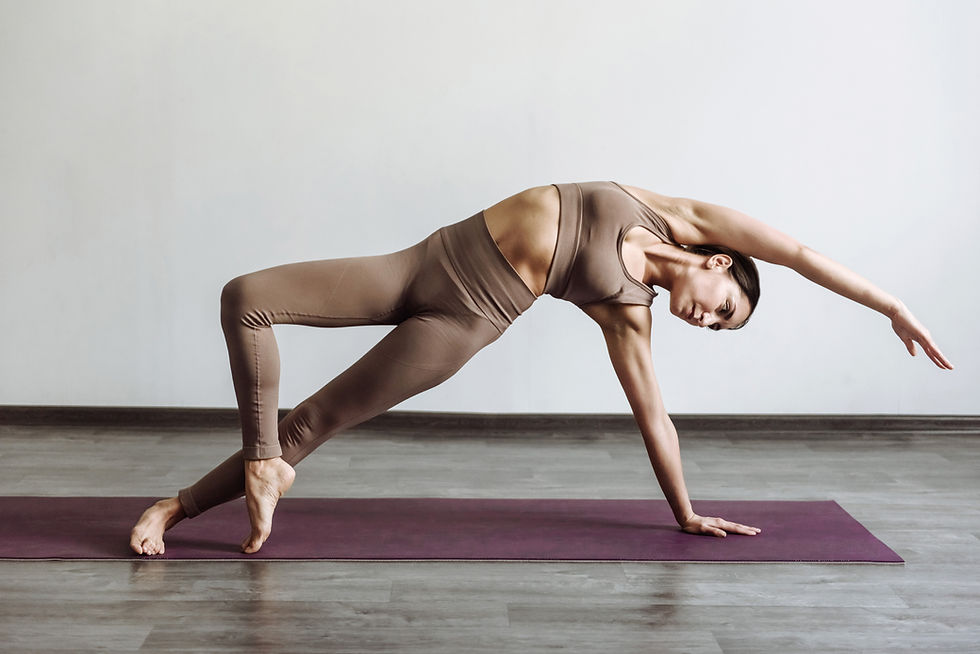What is a Moon Salutation?
- Yoga Haven

- Nov 8, 2023
- 3 min read
If you’re asking “What is a moon salutation?” there is a strong possibility that you’re already familiar with yoga and the practice of Sun Salutations. The Moon Salutation, also known as "Chandra Namaskar" in Sanskrit, is the counterpart to the Sun Salutation which honors the vital energy of the sun and seeks to warm up the body during practice. The moon salutation is performed more slowly and it honors the calming and feminine energy of the moon.
The Moon Salutation has a rich history and has been incorporated into yoga practices worldwide. The sequence consists of familiar poses such as goddess, five pointed star, triangle, low lunge, crescent moon, and malasana (squat) among others. While the poses may go by many different English names depending on the studio and teacher, the order of the moon salutation remains the same - which means that with practice it can become second nature to dedicated yogis. Read on to learn more about moon salutations and consider visiting Yoga Haven in Winter Haven, Florida to practice with experienced teachers and inspired peers.
Here's a brief history of the Moon Salutation:
Ancient Origins:
The origins of the Moon Salutation can be traced back to ancient yogic traditions in India. Yoga has a long history, dating back thousands of years, and various postures and sequences were developed to connect practitioners with the natural world and its energies. The moon has held special significance in Indian culture for centuries and the moon salutation honors that influence, “saluting” the power of the moon and expressing gratitude for its influence on all of life's processes.
Integration into Yoga:
The Moon Salutation sequence was created as a way to harness the soothing and reflective qualities of the moon. It is considered a gentle, calming, and introspective practice, making it suitable for evening or nighttime practice when the moon is visible (or not). The sequence is typically done early on in the practice or it can make up the entire practice following a brief warm up. The poses within the moon salutation can be practiced by beginners.
Adaptations and Variations:
Over time, yoga schools and teachers have adapted and modified the Moon Salutation to suit their students' ability levels. This has led to variations in what the sequence of poses looks like which is totally ok! At Yoga Haven in Winter Haven, Florida we believe that yoga should be accessible to all. At our studio, you will find a variety of props to help make every pose possible for you regardless of your experience level. Examples of props include straps, blankets, and blocks and bolsters of different sizes.
Modern Practices:
In contemporary yoga, the Moon Salutation has gained popularity as a complement to the Sun Salutation. Many yogis appreciate the balance that practicing both sequences can bring to their lives, as the Sun Salutation is often associated with energy and vitality, while the Moon Salutation is associated with relaxation and inner peace. Salutations, like different styles of yoga, may have special appeal depending on what you are looking for during your practice. Try the sun and moon salutations, as you would try different types of yoga, and see which one speaks to you, knowing that it may change in the future.
Practice Moon Salutations at Yoga Haven in Winter Haven
In summary, the Moon Salutation, or Chandra Namaskar, is a yoga sequence that pays homage to the moon's calming and feminine energy. It has a rich history rooted in ancient yogic traditions and has been adapted and embraced by modern studios and their teachers. Whether you're a seasoned yogi or a newcomer to the practice, the Moon Salutation offers a unique opportunity to connect with the soothing energy of the moon and find balance in your life. Visit Yoga Haven in Winter Haven, Florida and ask your instructor to flow with you during a moon salutation or incorporate them in their next class. We look forward to seeing you on the mat!






Comments